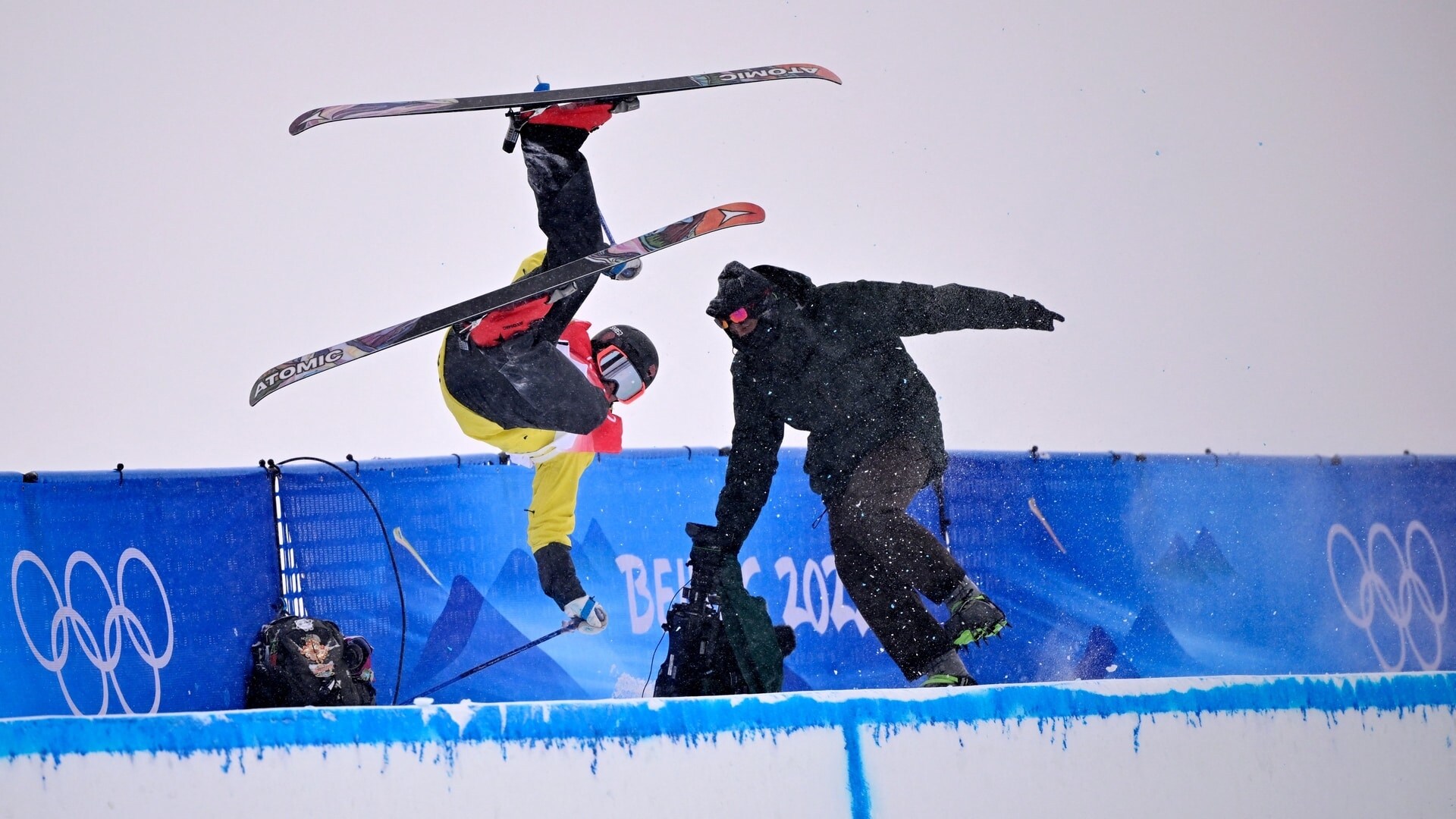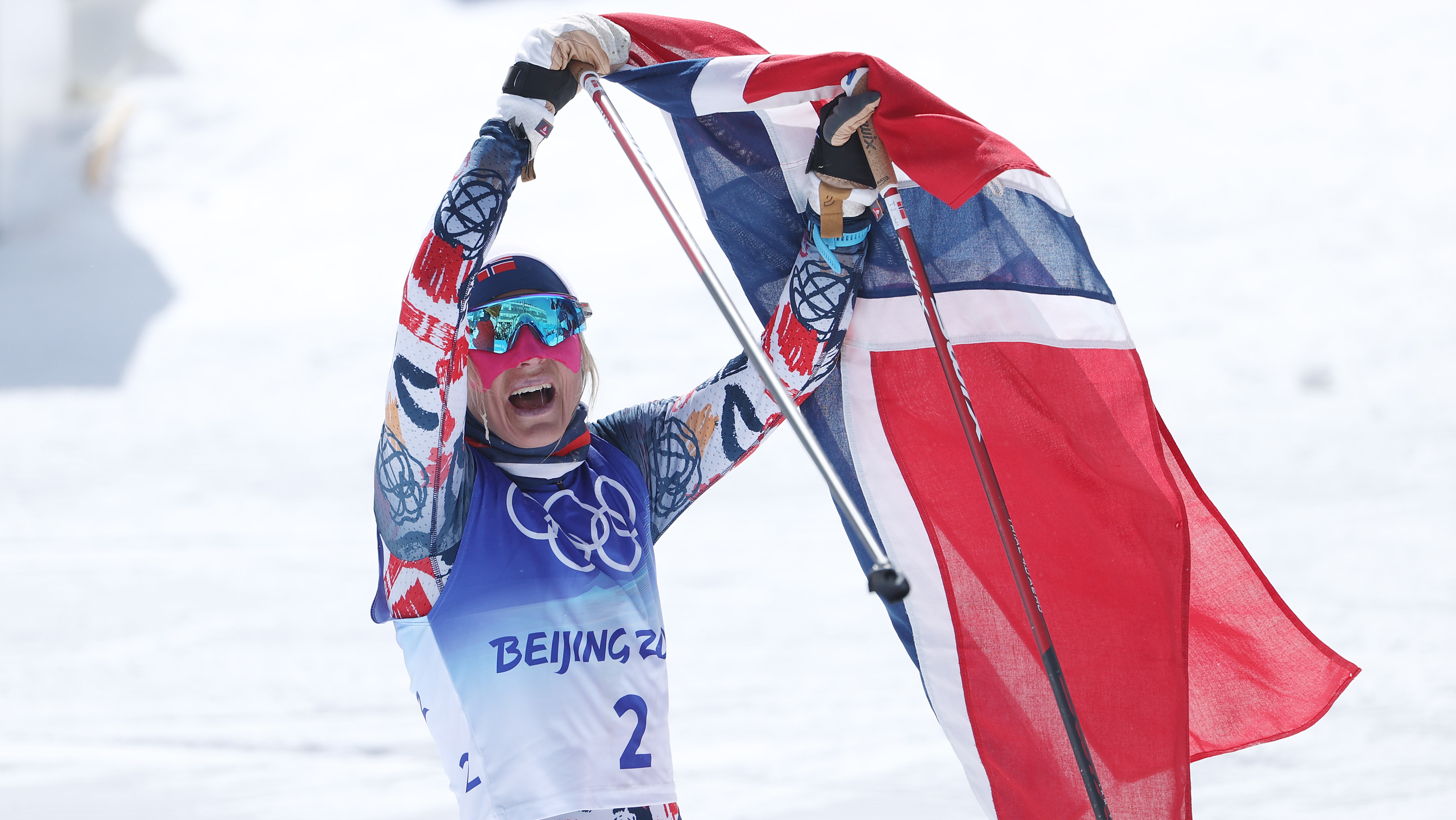Vera Wang discovered her first passion while on a frozen lake in Central Park, wearing ice skates she received from her father for Christmas.
Long before she became a world-renowned fashion designer who dresses models to stride down the runway, and celebrities to pose on the red carpet and brides to walk down the aisle, Wang dreamed of becoming an Olympic figure skater.
She took skating lessons, commuted to New Jersey nightly to use a public rink and trained in ballet to apply the artistry to her skating. She became a competitive skater, dabbled in speed skating and competed in pairs at the 1968 U.S. Figure Skating Championships.
It was there that Wang's Olympic dream came to an end.
Get Philly local news, weather forecasts, sports and entertainment stories to your inbox. Sign up for NBC Philadelphia newsletters.
“I was heartbroken,” Wang said. “I was completely lost. Bereft. I needed to find something else that I could love as much. It turned out to be fashion.”
Skating guided her to fashion, and fashion ultimately guided her back to skating. In the early 1990s, Wang began designing costumes for Olympic figure skaters, dressing medal-winners like Nancy Kerrigan, Michelle Kwan, Evan Lysacek and, presently, Nathan Chen.
The athleticism and aerial artistry of Chen -- whose propensity to successfully complete quadruple jumps earned him the nickname "Quad King" -- presented design challenges. Chen went on to capture his first gold medal Thursday at the 2022 Winter Games in Beijing while performing to Elton John's "Rocket Man" and wearing Wang's galaxy-printed costume.
Beijing 2022 Winter Olympics
Watch all the action from the Beijing Olympics live on NBC
Wang’s road to the Olympics was paved as two passions merged, showing her that figure skating and fashion are cut from the same cloth.
“I never made the Olympics,” Wang said. “But my dresses did.”
A Staggering Responsibility: Dressing Nancy Kerrigan
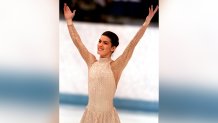
Designing for figure skaters was a project Wang initially turned down.
Wang was asked to design Nancy Kerrigan’s costumes by her coach, Mary Scotvold, ahead of the 1992 Winter Olympics in Albertville. She initially declined because she hadn’t done it before. And a double Axel or triple Lutz certainly had never been attempted in the wedding dresses or evening wear she designed.
After some convincing, Wang agreed.
She then began having nightmares: a dress that rips at the arm hole, a quadruple-sewn zipper that comes undone, a sequin that drops to the ice and causes a fall.
Wang was haunted by the fear of costing a skater an Olympic medal.
“I was always very reticent because I know, as a skater, the responsibility it is,” Wang said. “If there is any wardrobe malfunction, you can ruin someone’s Olympic championship. That’s how insane that is. When you stop and think about it, the responsibility is staggering.”
She was pushed outside her comfort zone and forced to expand the boundaries of her creativity – a fashion icon handed a paintbrush and given an ice rink to use as her canvas.
For Kerrigan, dressed by Wang for the 1992 and 1994 Olympics, that often meant costumes inspired by full dresses created by her designer.
“I was trying to bring out, sort of like, a Grace Kelly, Audrey Hepburn kind of look for her,” Wang recalled.
That ranged from the simplicity of a solid-white, no-frills costume worn in 1992, to the elegance of a flesh-colored dress featuring over 10,000 heat-pressed rhinestones in 1994. The sleeves on the latter introduced a transparent, stretch illusion fabric so thin and form-fitting it left Wang fearful of a rip.
“This is the reality of dressing a figure skater,” Wang said. “It’s scary because they have to perform. I’m not saying that the Oscars isn’t important, or the Golden Globes. But, unless you’re performing on stage, it’s basically a red-carpet process and that’s very, very different. There are other challenges there, but it’s very different from an athlete.”
Opening Up the Sketchbook For Michelle Kwan
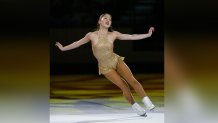
Vera Wang faxed five sketches to Michelle Kwan.
It was just prior to the 2004 National Championships, and each sketch showed front and back costume designs for Kwan to select from. The sketches, which Kwan recently posted on Instagram, had subtle differences but maintained key elements Wang said Kwan requested of her costumes to create a near-weightless freedom.
No superfluous fabric. Clear around the neck. Low-volume skirt.
“Each skater has very different parameters to how they want to dress for technical reasons, which is really something because you don’t see it in a costume, necessarily,” Wang said.
Before Wang begins to sketch, she is first sent the music for the skater’s short and long program so, she said, she can relate to it musically. She gets an advance viewing of the choreograph program, even if only in its earliest stages. Then the sketching begins.
“The music and the choreography guides everything in terms of creativity,” Wang said.
That was evident in the costumes Kwan wore during the 1998 and 2002 Olympics when she was dressed by Wang, particularly the golden dress from her memorable “Fields of Gold” performance.
Much more fabric was used in 2013 when Wang designed Kwan’s wedding dress as the two went from making fashion statements on the ice to at the altar.
As for those old sketches on Kwan’s Instagram post, Wang liked and commented on it.
“I was so happy because I thought the clothes looked very modern even today,” Wang said. “You’re always worried as an athlete, as a performer, as a designer that your work, when you look back, looks irrelevant. I think we all fear that.”
Breaking Gravitational Rules With Evan Lysacek and Nathan Chen
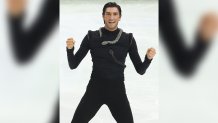
When the Olympians take the ice in costumes she designed, Wang often can’t bear to look.
“I’m a wreck,” she said. “It’s fully out of your control. But what isn’t out of my control is where the costume holds together. That is in my control. So, that’s the added pressure.”
That pressure increased ahead of the 2010 Olympics when Wang was asked to design for Evan Lysacek. Dressing a male figure skater for the first time meant more torque, more jumps, more fabric, more stitching and more stress.
But, ultimately, more success.
Lysaceck went on to win gold as the Olympic champion while wearing Wang’s black one-piece featuring bejeweled snakes that wrapped around his neck and torso.
“Evan wanted to evoke both of his programs and the theatricality of them,” Wang said.
The opposite was true of Wang’s next male figure skating client: Nathan Chen, the 22-year-old star of the 2022 Winter Olympics.
Chen, who also was dressed for the 2018 Olympics by Wang, wanted a minimal look for one of his costumes, creating a sense of wearing a suit on the ice.
“He didn’t want to be dressed up in any sort of very theatrical costume, that isn’t him,” Wang said. “He didn’t want anything that was overly ornamental. He was very specific that even though he wanted it to be a suit, it had to feel like a T-shirt. And that’s really hard to do for a designer.”
But imperative for a skater who defies the laws of physics as Chen does on quads.
That was why Chen and Wang collaborated on a costume change from a one-piece to a two-piece that provided more stretch and freedom on jumps “when you’re trying to break all sorts of gravitational pull rules, like rotating four times in the air,” Wang said.
“I mean, just what are the limits for the human body to both launch themselves into the air and rotate like that and land on one leg, on one thin, thin millimeter of a blade? I know it always looks very beautiful, but that’s the brilliance of skaters. They make it look effortless and they make it look expressive.”
'The Two Fs'
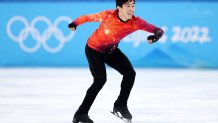
Having dressed glamorous brides and Hollywood stars, Wang was asked where designing for Olympians and gold-medal winners ranks among the achievements in her storied career.
“Right up there,” said Wang, who was inducted into the U.S Figure Skating Hall of Fame in 2009. “I just feel it’s an honor, but I also understand the gravity of it all. I understand what’s at stake here.”
Because, as a former skater and Olympic hopeful, it once was at stake for her.
“I joke it’s the two Fs: figure skating and fashion,” Wang said. “But in all fairness, that I can meld the two was beyond my wildest. I never dreamt that I would come back to figure skating in the capacity that I came back to.”
It allowed a dream Wang first developed while ice skating in Central Park as a child to, in some fashion, come true.
She never made the Olympics. But her dresses did.
“It’s a very unique sport that I’m proud to have played some sort of part in because it’s not only insanely technical and athletic but you also have to present yourself beautifully,” Wang said. “I never made the team. But I’ve been so proud to have dressed so many Olympians in a sport that has meant so much to me.”


